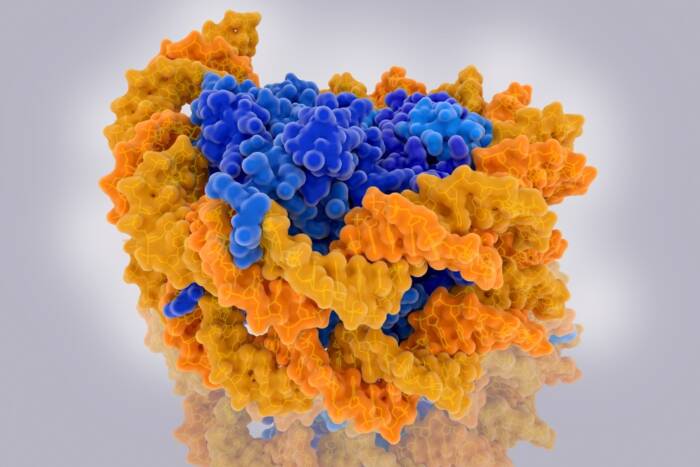A storeroom, transformed
by TALLEY HENNING BROWN
 Art is a messy business, but the kids at the Child and Family Center have a new handle on it. The CFC’s art studio, created last fall in what used to be a storage room, gives kids in the university’s child care facility a dedicated place to express their creativity — without staining the carpet.
Art is a messy business, but the kids at the Child and Family Center have a new handle on it. The CFC’s art studio, created last fall in what used to be a storage room, gives kids in the university’s child care facility a dedicated place to express their creativity — without staining the carpet.
Funded by $25,000 in private donations from the university’s Women & Science program, renovations to the space were done entirely by Plant Operations personnel; the room’s furniture was paid for by the Parents’ Association. “What I really like about this is how excited everyone is about having this dedicated space,” says CFC Director Marjorie Goldsmith. “It’s hard enough for elementary and even secondary schools in this country to hold onto their art programs, but it’s actually rare for an early-childhood program to have one, and we do.”
The studio’s design reflects more consideration than just the need for kid-sized sinks and chairs. Paints and colored pencils and other supplies are organized by color or shape with an eye toward inspiring students to be thoughtful about the medium they choose. Shelves are laid out with groupings of singular objects found (by the kids, of course) in nature — a basket of pinecones on one shelf, a bowl of round stones on another. The room is relatively small, with elbow space for only a few children at a time, but that, Ms. Goldsmith explains, is part of the point. “Many of our activities with the kids are like that,” she says. “The kids are here for as long as eight or nine hours a day, and they need more than just large-group activity. There’s a pretty universal attitude here that we don’t want these kids to just have full-time babysitting; we want this to be a fully educational environment.”
The CFC’s educational objective is defined along the lines of the Reggio Emilia Approach, an early-childhood educational philosophy created in the 1940s in Italy and now followed by many American preschools. The approach is characterized by its attention to different learning styles, the significance it places on children’s self-expression and its recasting of the teacher’s role as that of director in a mainly child-initiated learning process. The CFC has one part-time art teacher, Lindsay Lauder, who is also a practicing artist and art therapist.
Works by Rockefeller’s young artists-in-residence are regularly on display along the entrance wall of the Weiss Café, but the kids have already garnered attention from the larger community. On the first weekend in November, the Barnes and Noble bookstore at East 86th Street and Second Avenue helped raise funds for the studio by donating 15 percent of any purchase made by someone who mentioned the CFC. The proceeds — about $180 — went toward art books for the studio. And a recent field trip to the Museum of Modern Art illustrated the success of the program when the Rockefeller kids recognized Claude Monet’s Water Lilies. “It was the most wonderful thing to see these young children who not only knew something about the Monets but were so excited to see them in person,” says Ms. Goldsmith. “They totally surprised all the calm, quiet adults in the room.”


